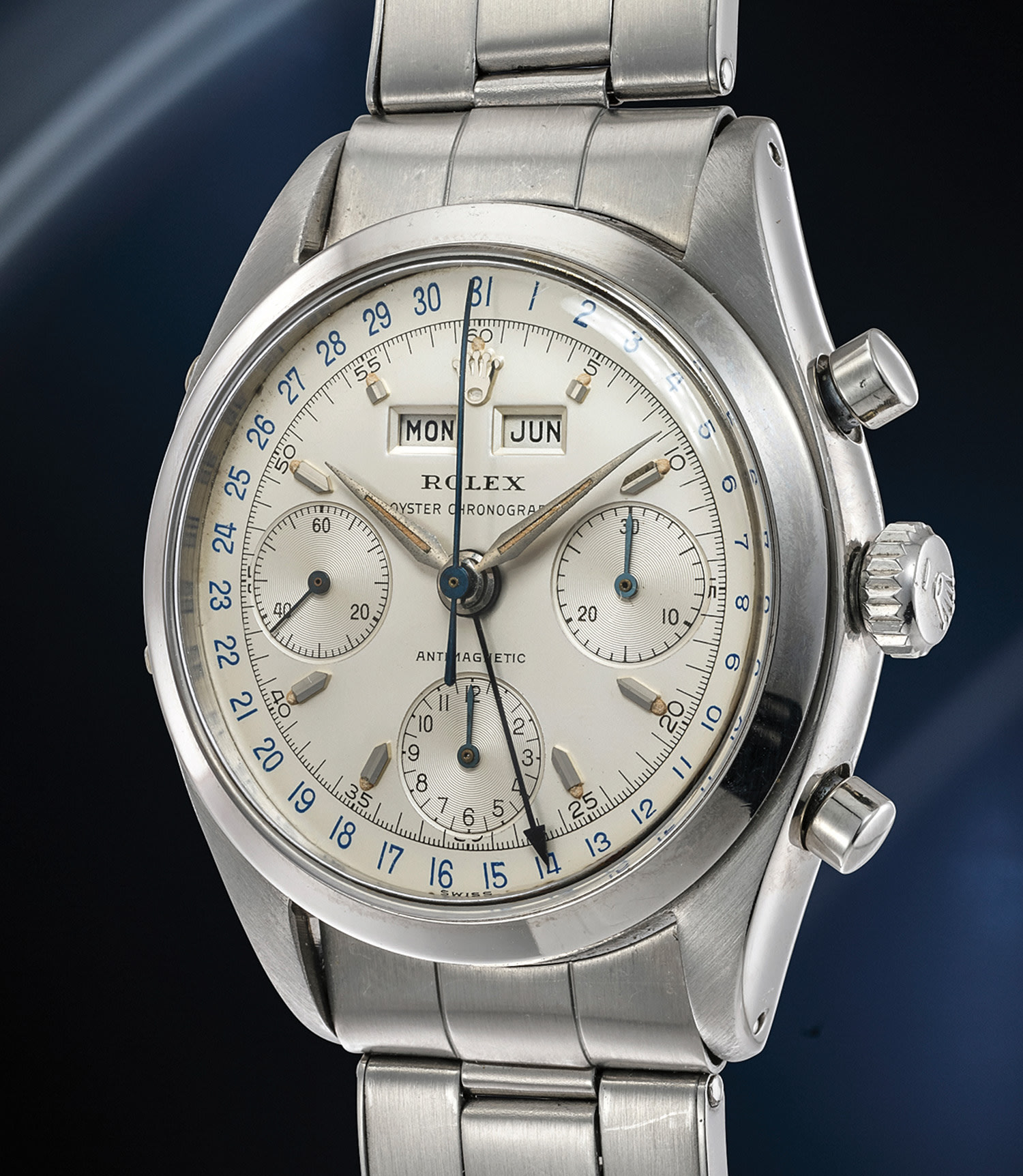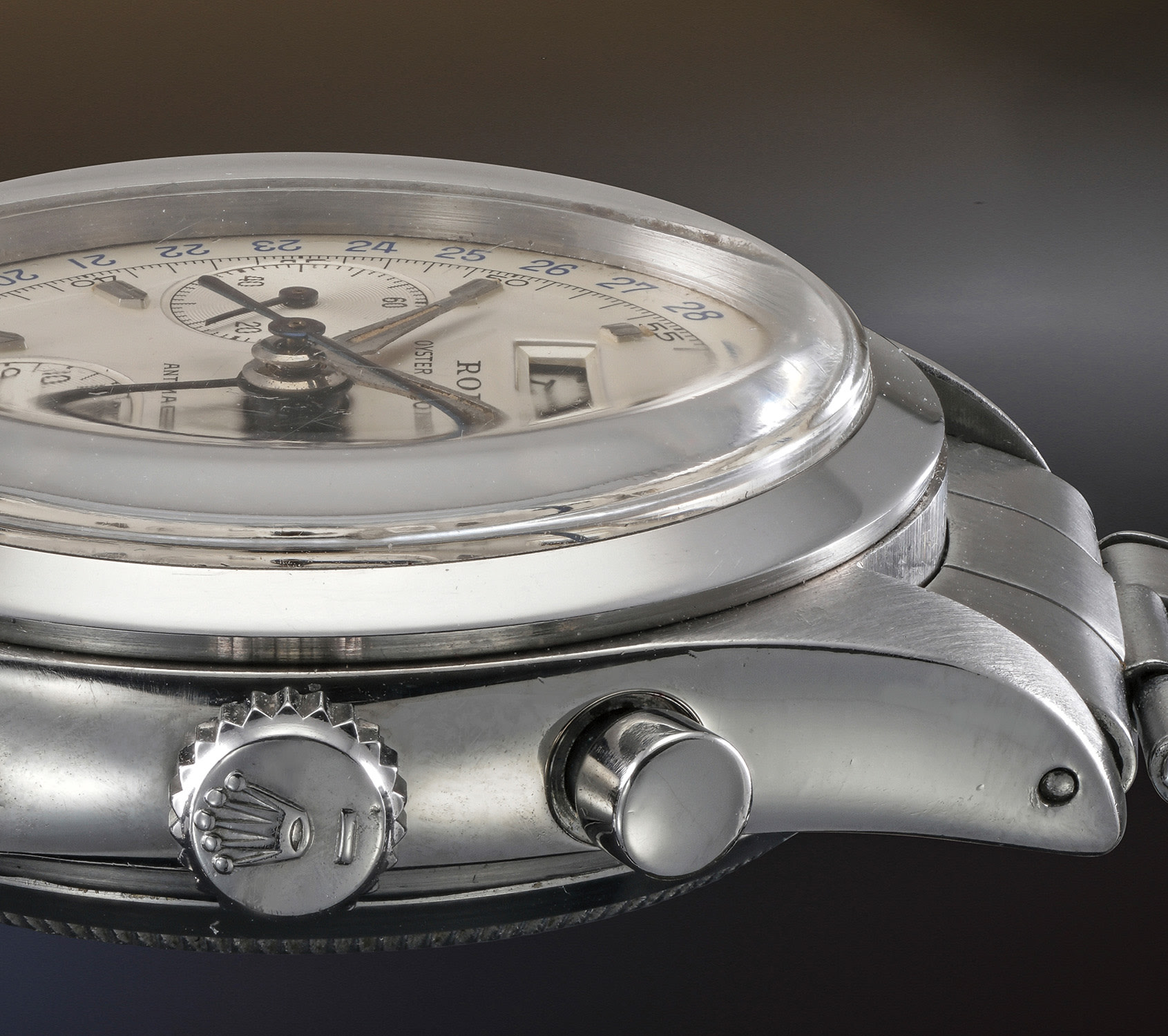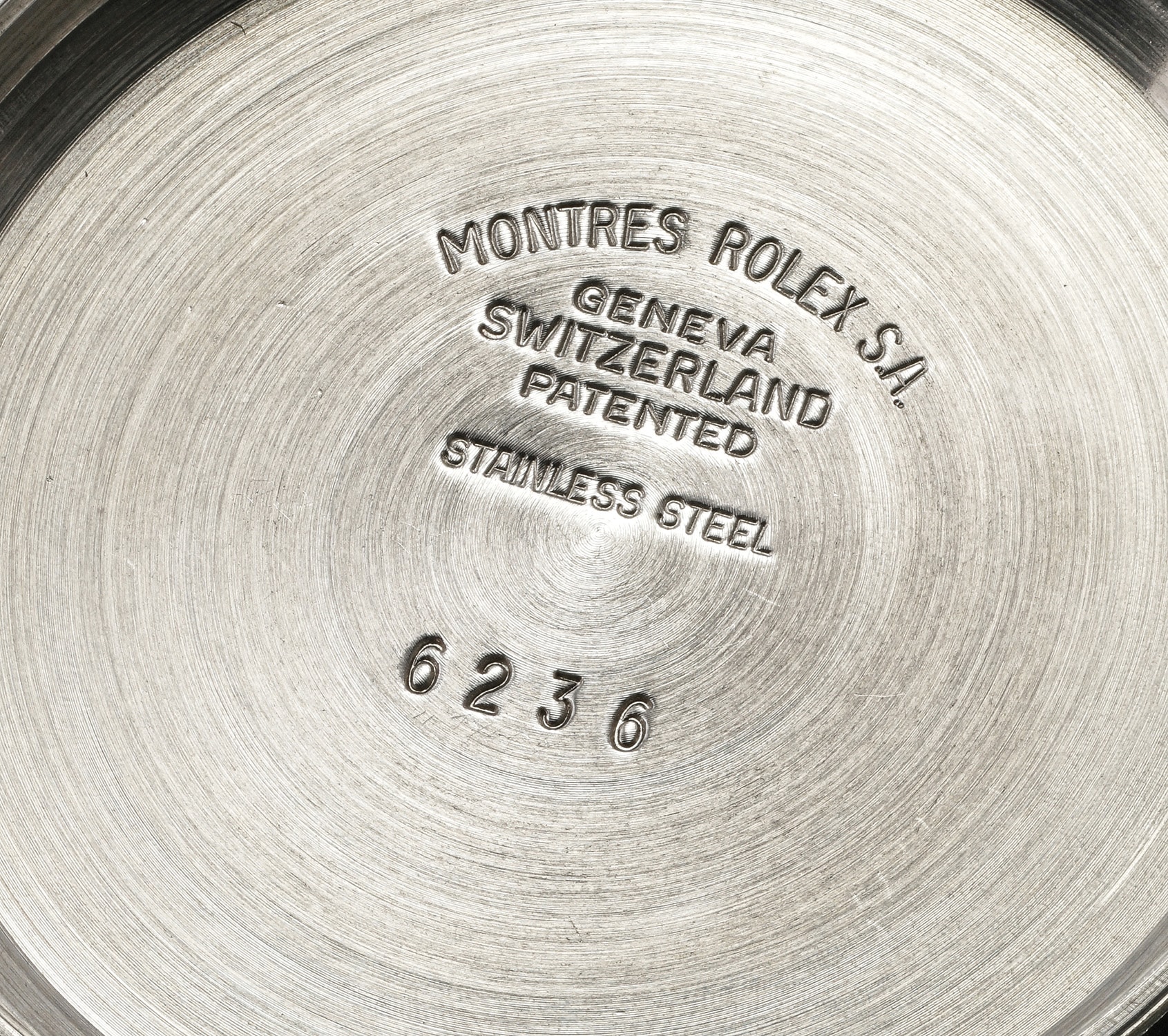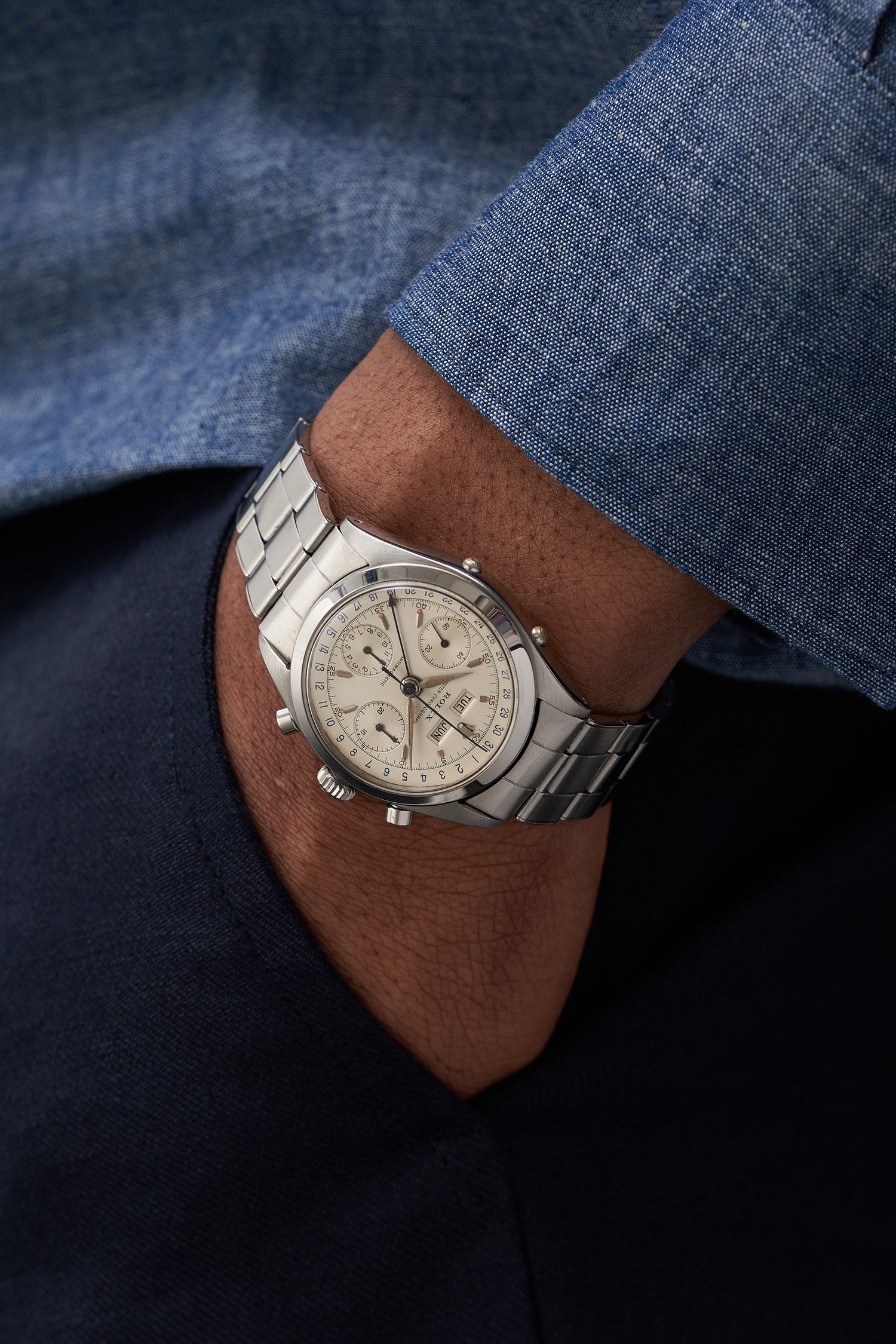













193
Rolex
Ref. 6236
Oyster Chronograph, "Datocompax", "Killy"
A highly attractive and impressively well preserved stainless steel chronograph wristwatch with triple calendar and bracelet
Full-Cataloguing
The five Killy references were in production from the mid-1940s to the early 1960: just a little more than 15 years. When one considers the lifetime of other Rolex models - such as the Daytona or the Submariner, introduced respectively in 1962 and 1953 and still in production - one realizes this is little longer than a heartbeat for the company.
Reference 6236, successor to ref. 6036, represents the final evolution of the series: it is the only model to feature a three-piece case and the dial features subtle graphical modernizations, such as the appearance of closed 6s and 9s (while earlier references notoriously feature open 6s - albeit the two styles have been in parallel production for some time, making it impossible to trace a clear separation date).
With the discontinuation of this latest model, Rolex puts an end to its most complicated (vintage) line of chronograph timepieces. A similar level of complication is approached only by references 8171 and 6062, combining triple calendar with moonphases.
The present example is a remarkable representative of this fabled and rarefied model. The case is in excellent condition, obviously enjoyed with respect throughout its entire lifetime. There is no indication of aggressive polishing: the lugs are full and the satin finish to the top is strong. The pinholes are well distanced from the edges of the lugs, indicating no alteration of the overall case proportion. Only minor and light surface marks are present, highlighting the honest condition of the watch. The bracelet in itself is also highly collectible, as it is a riveted expandable specimen featuring the sought-after “71” endlinks.
The dial is however the star of this show, as it is in sublime condition without traces of cosmetic intervention or enhancement. Most notably, it allows the beholder to appreciate the production finishing methodology of Rolex at the time: the final layer of white paint would be sprayed on the dial once the indexes and Crown logo had been pressure-stamped, thus covering them with paint. Subsequently, the top of the indexes would be polished to bring back out the metal, but the sides retain the white coating - exactly as in this instance. Such a production methodology is often found on Rolex dials of the time.
Rolex
Swiss | 1905Founded in 1905 England by Hans Wilsdorf and Alfred Davis as Wilsdorf & Davis, it soon became known as the Rolex Watch Company in 1915, moving its headquarters to Geneva in 1919. Like no other company, the success of the wristwatch can be attributed to many of Rolex's innovations that made them one of the most respected and well-known of all luxury brands. These innovations include their famous "Oyster" case — the world's first water resistant and dustproof watch case, invented in 1926 — and their "Perpetual" — the first reliable self-winding movement for wristwatches launched in 1933. They would form the foundation for Rolex's Datejust and Day-Date, respectively introduced in 1945 and 1956, but also importantly for their sports watches, such as the Explorer, Submariner and GMT-Master launched in the mid-1950s.
One of its most famous models is the Cosmograph Daytona. Launched in 1963, these chronographs are without any doubt amongst the most iconic and coveted of all collectible wristwatches. Other key collectible models include their most complicated vintage watches, including references 8171 and 6062 with triple calendar and moon phase, "Jean Claude Killy" triple date chronograph models and the Submariner, including early "big-crown" models and military-issued variants.